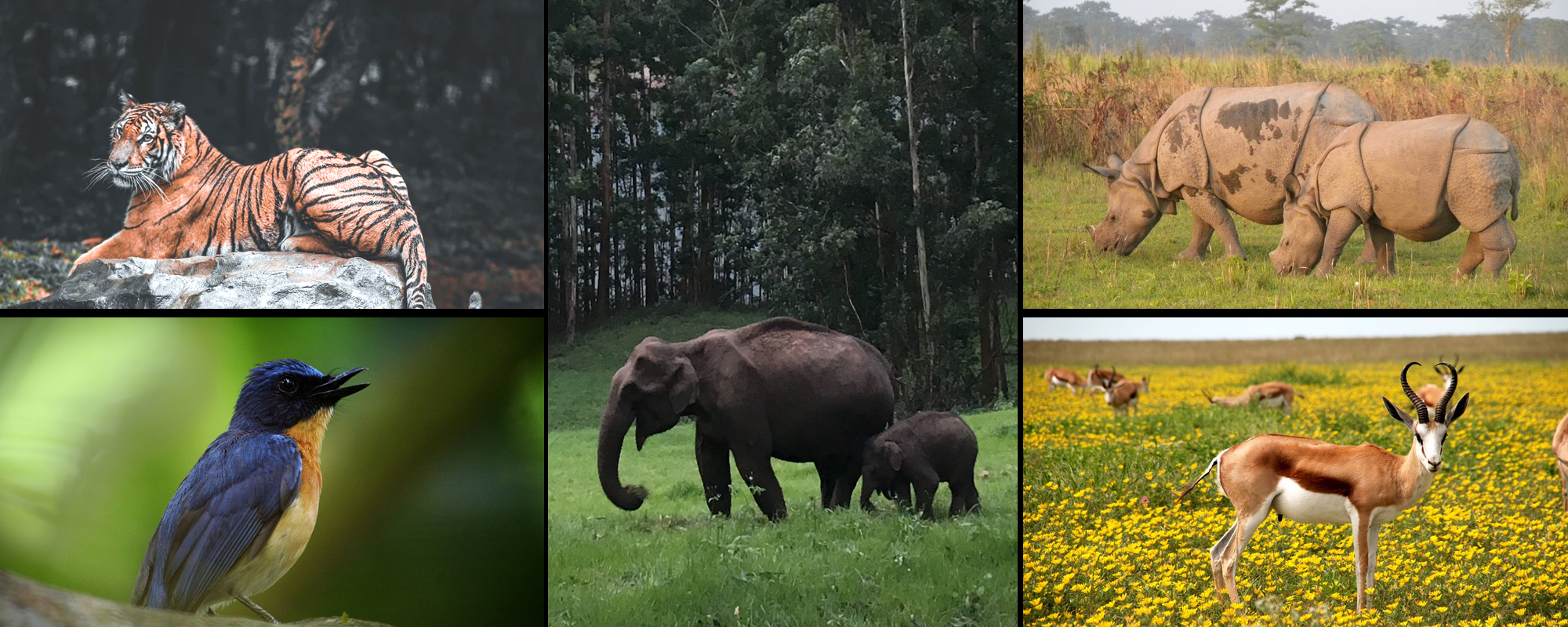
A national park known for its dense foliage of mangrove forests and the majestic Royal Bengal Tiger, Sunderbans National Park is a wetland made of islands, rivers, world’s largest mangroves forest, tributaries and the rich variety of flora and fauna form an intricate system of networks. Made as a national park in 1984, Sunderbans is one of the most extravagant and luscious national parks with a majestic natural beauty that attracts tourists from across the globe. A ride on the motorboat inside the park will give your money’s worth of experience and a chance to witness the fauna and flora.
Birds such as Brahminy Kites and Whistling Teals create a symphony while the crocodiles and ridley turtles fascinate you near the water. And ofcourse, the rich variety of land animals cannot be forgotten as well. The Sunderbans is many things at once – a biosphere reserve, national park, and a tiger reserve due to its richness of the mangrove system. It is a large delta sprawled across West Bengal in Indian and some part in Bangladesh as well at 40,000 square kilometers. It stretches from River Hooghly in West Bengal to River Baleswar in Bangladesh and is titled as a UNESCO World Heritage Site. the name sunderbans means ‘beautiful forests’ in local language which is apt to describe the beauty of this wonder. Take a boat safari inside the park and witness the nature thrive in prosperity with your own eyes.
The history of Sunderbans goes back to 200-300 AD. It is believed that the forest land was given to the residents living nearby during the Mughal period for building settlements. Those settlements were, however, later destroyed by the Portuguese and salt smugglers in the 17th century and only some ruins remain now.
In the year 1875, a large portion of the forested land was declared as ‘reserved’ under the Forest Act, 1865 (Act VIII of 1865). After the independence, the area was declared as a wildlife sanctuary in 1977 and was upgraded to national park status on 4th May 1984. Before that in 1973, it was declared as a tiger reserve under Project Tiger.
Inside the lush forest of Sunderbans about 78 species of mangroves thrive in glory. These mangroves are extremely significant in the survival of marine organisms. The 64 plant species which are found have learned to survive in brackish waters and saline inundation. Some common species found here are Sundari tree, Golpati, Champa, Dhandul, Genwa, and Hatal.
Sunderbans National Park offers only boat safari to its visitors and jeep safari is not conducted here. Tourists can sail through the dense forests connected by many free flowing rivers like Malta and Bidyadhari via boats operated by West Bengal Tourism Department. There are two kinds of boats available – AC and Non-AC and come in large and small sizes for long and short sailing. The safari boats can be booked for a day or for an entire week which have beds and other furniture to stay and relax.
A one-day private boat safari starts at 8 am and is completed by 5 pm and costs INR 950 per person with an additional cost of INR 600 for an overnight stay.
The safari timings are from 8:30 am in the morning to 4pm in the evening. Boats are not allowed to enter after 6:30 pm and safari rides may get canceled during monsoons.
The ideal time to visit Sunderbans is from November to March when the weather is pleasant and offers perfect weather conditions for tiger spotting along with other wild animals. You can also visit the national park during the summer seasons, but the heat can be too unpleasant to explore the area. Monsoons are usually avoided because most of the areas get flooded and taking a boat ride becomes unfeasible.
Sunderbans National Park is in West Bengal and a part of it is also extended to Bangladesh.
Sunderbans is one of the largest mangrove habitats in the world and the only mangrove habitat in the world for Panthera Tigris species. It is home to globally endangered species including the Royal Bengal Tiger, Ganges and Irawadi Dolphins, estuarine crocodiles, and critically endangered endemic river terrapin.
Sunderbans mangrove forest is one of the largest of such forests in the world which lies on the delta formed by the Ganges, Brahmaputra, and Meghna River which is the world’s largest delta.
Yes, Sunderbans have been titled as a UNESCO heritage site housing exotic mangroves and fauna species.
Copyright 2012-2025 Indiamap Digital Private Limited. All rights reserved. Privacy Policy | Terms of Use